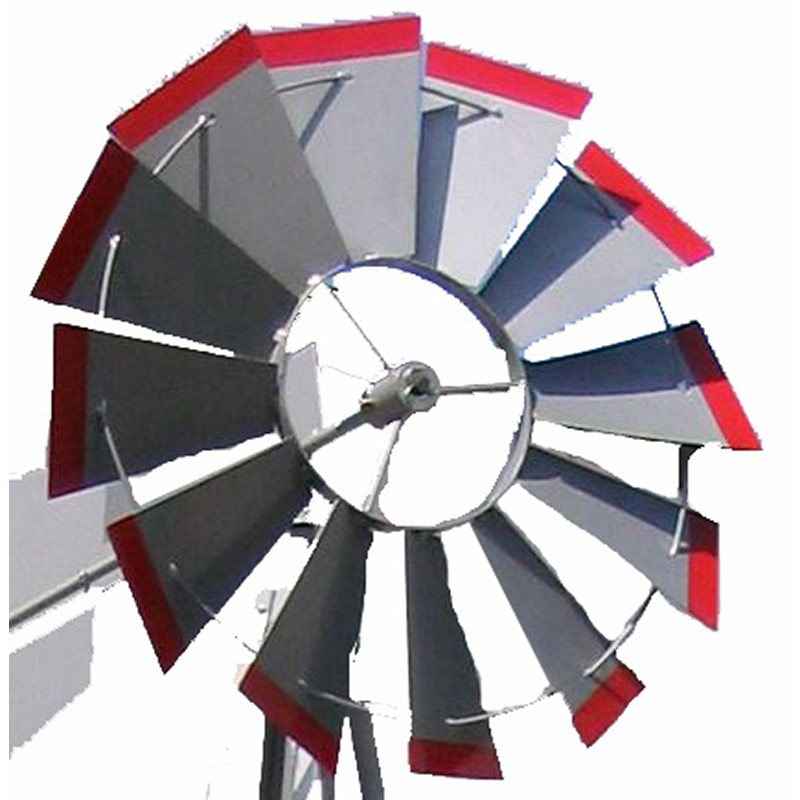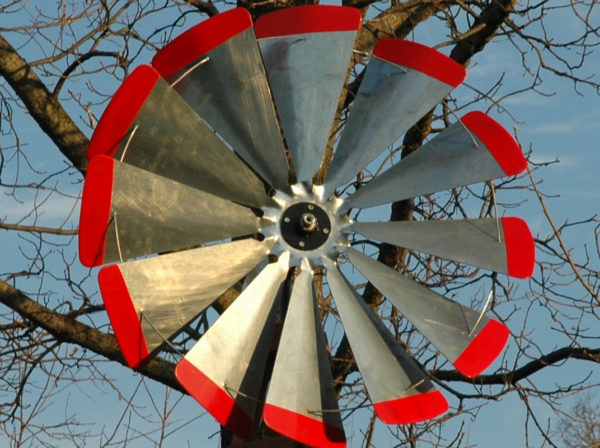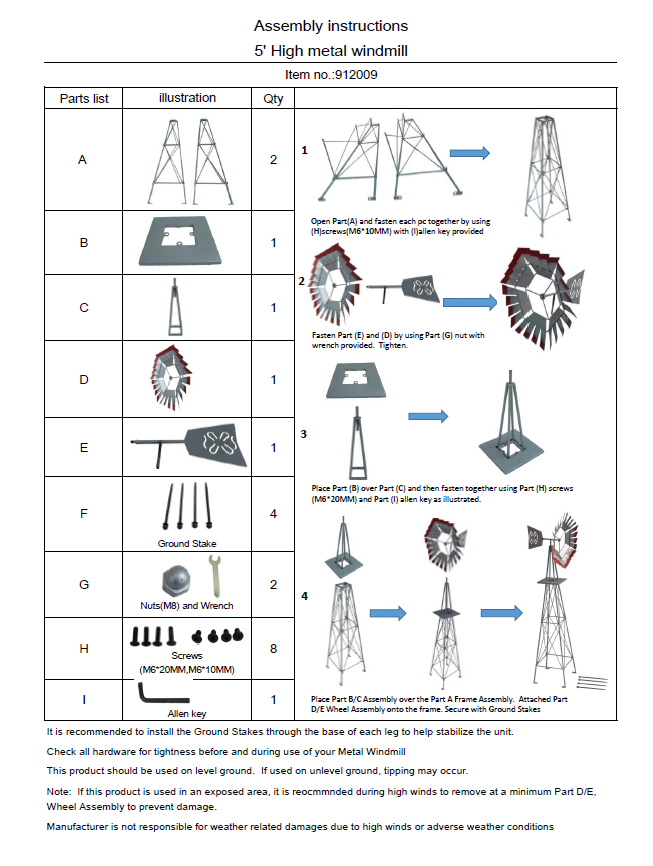Windmills have long captured the imagination, standing as a testament to art, engineering, and the beauty of nature. As decorative pieces, windmills can transform any garden or outdoor space into a picturesque landscape. This article explores the world of decorative windmill parts—from their history and significance to the various types you can incorporate into your home. With personal experiences and practical tips, let’s venture into this delightful adventure!
The Charm of Decorative Windmills
Decorative windmills are more than just attractive garden features; they carry a sense of history and nostalgia. These structures originate from traditional windmills used for grinding grain or pumping water. The decorative versions, however, serve a primarily aesthetic purpose, enhancing the beauty of outdoor spaces.
Personal Experience: My First Windmill
When I first installed a decorative windmill in my backyard, I was amazed at how it transformed the space. The gentle turning of the blades, coupled with the sunlight streaming through them, created a serene atmosphere that was hard to beat. It became a focal point for family gatherings and a perfect backdrop for photos.

The Components of a Decorative Windmill
Understanding the parts that make up a decorative windmill can help you appreciate their craftsmanship and functionality. Here’s a breakdown of the essential components:

1. Base
The base of the windmill is crucial as it provides stability. It can be made of wood, metal, or even stone, depending on the style you choose.
2. Tower
The tower supports the entire structure. Usually made from steel or treated wood, it gives the windmill its height and visibility.

3. Blades
The blades are what give the windmill its charm. Typically made from wood or durable plastic, they should be able to catch the wind efficiently.
4. Tail
The tail acts as a rudder, helping to pivot the windmill towards the wind direction. It’s often designed to match the aesthetic of the blades.

5. Hub
The hub connects the blades to the tower. It must be sturdy enough to support the weight of the blades while allowing them to spin.
6. Decorative Elements
Many decorative windmills come with additional features like painted designs or lights, which enhance their aesthetic appeal.

Why Invest in Decorative Windmill Parts?
Decorative windmills can amplify the charm of your garden or outdoor area. Here are a few reasons why investing in these components can be beneficial:

- Visual Appeal: They provide a unique focal point that captures attention.
- Personalization: You can customize them to fit your style—Rustic? Modern? Quirky?
- Easy Maintenance: Most parts are durable and easy to clean.
Types of Decorative Windmills
There are various types of decorative windmills available on the market. Let’s explore some of the most popular:
1. Traditional Dutch Windmills
With their iconic shape and vibrant colors, traditional Dutch windmills are perfect for creating a classic look.
2. Farmhouse-Style Windmills
These designs evoke a rustic charm, often featuring weathered finishes and simple lines.
3. Modern Windmills
For a contemporary touch, modern designs utilize sleek materials and minimalist designs.
Comparison Table of Decorative Windmill Types
| Type | Materials | Style | Best For |
|---|---|---|---|
| Traditional Dutch | Wood, Metal | Classic | Garden, Landscape |
| Farmhouse | Wood | Rustic | Cottage, Country |
| Modern | Plastic, Metal | Contemporary | Urban, Minimalist |
How to Choose the Right Decorative Windmill Parts
Selecting the perfect windmill parts for your space requires consideration of several factors:
1. Purpose
Are you looking for a purely decorative piece, or do you want something that can functionally catch the wind?
2. Size
Consider the scale of your garden. A large windmill in a small space may overwhelm the area, while a tiny windmill might get lost in a sprawling landscape.
3. Style
The windmill should complement the overall aesthetic of your outdoor space. Match colors, materials, and designs for a cohesive look.
Tips for Installation
- Ensure a Level Surface: A stable, level surface is crucial for the windmill’s functionality.
- Follow Instructions: Always adhere to the manufacturer’s guidelines for assembly.
- Check for Wind Exposure: Position the windmill where it can catch the most wind.
Pros and Cons of Decorative Windmills
Pros
- Enhances Visual Appeal
- Variety of Designs Available
- Durable and Long-lasting Materials
Cons
- May Require Maintenance Over Time
- Can Be Expensive Depending on Design
- Space Requirements for Installation
Where to Buy Decorative Windmill Parts
Finding the right parts for your decorative windmill can be easy if you know where to look. Here are some popular options:
1. Home Improvement Stores
Local stores often have a selection of decorative windmill parts, allowing you to see materials and quality firsthand.
2. Online Retailers
Websites like Amazon, eBay, and specialized garden retailers offer a wide range of options that can be delivered directly to your home.
3. Craft Fairs and Farmers’ Markets
Local artisans often sell unique, handmade windmill parts, providing a charming touch to your garden.
Maintaining Your Decorative Windmill
To keep your windmill looking its best, regular maintenance is essential. Here are some tips:
1. Cleaning
Use a soft brush or cloth to remove dust and debris from the blades and tower. Avoid harsh chemicals that can damage the paint or finish.
2. Inspecting for Damage
Regularly check for signs of wear or damage, especially after storms. Addressing minor issues promptly can extend the life of your windmill.
3. Seasonal Preparation
Consider taking down the windmill during extreme weather conditions. Store it in a dry place during winter months to prevent damage from snow or ice.
FAQs about Decorative Windmill Parts
1. What materials are best for decorative windmill parts?
Common materials include wood, metal, and plastic. Each has its benefits: wood provides a rustic aesthetic, metal offers durability, and plastic is weather-resistant.
2. How can I personalize my windmill?
You can personalize a windmill by painting it in your favorite colors or adding unique decorative elements like lights or flower pots.
3. Are there any safety concerns with decorative windmills?
Ensure windmills are securely installed and regularly checked for stability to avoid accidents, especially in windy conditions.
4. How do I know if a windmill is suitable for my garden?
Consider the size, style, and overall theme of your garden. A well-chosen windmill should enhance the existing landscape.
5. Can I use a decorative windmill indoors?
While they are primarily designed for outdoor use, smaller models can make unique indoor decor in sunrooms or large living areas.
Conclusion
Decorative windmill parts can add charm and character to your outdoor space, making for a delightful addition to any garden. By understanding the components, types, and maintenance needs, you can create a stunning focal point that not only beautifies your landscape but also brings joy to your family and friends. So why wait? Start your journey into the enchanting world of decorative windmills today!